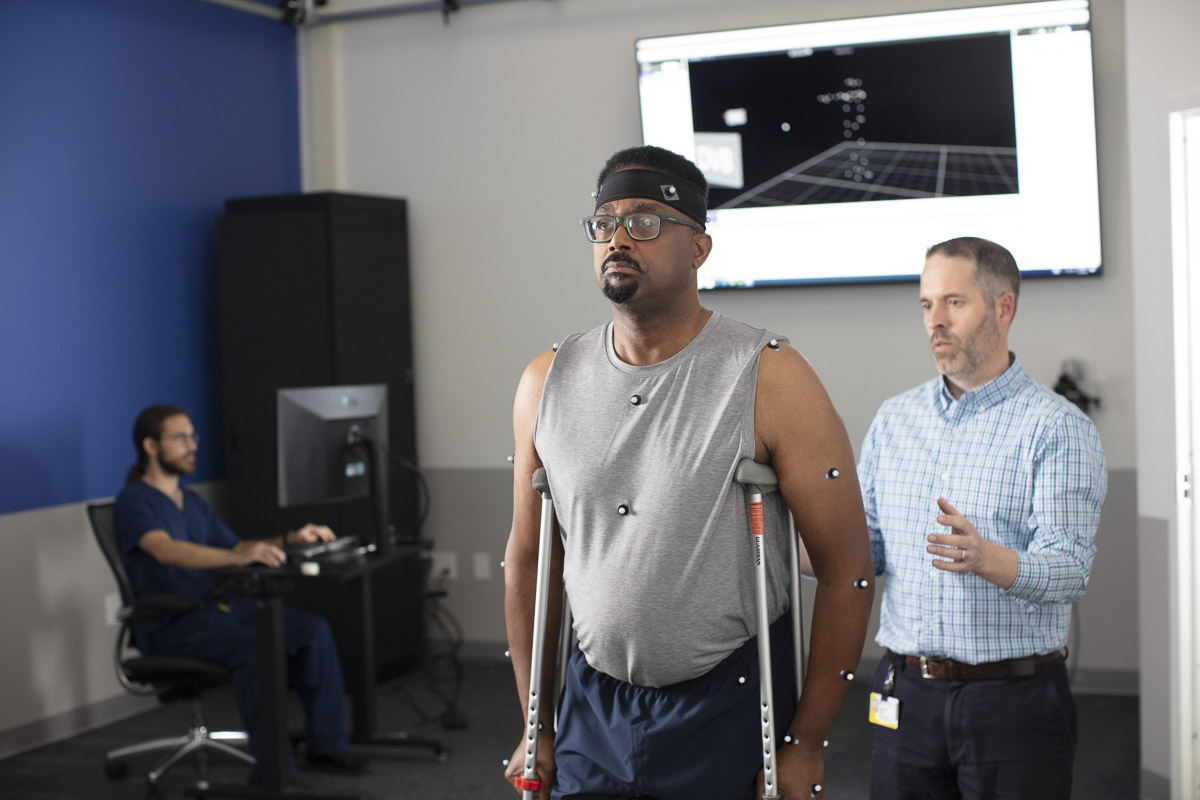Gait abnormalities are deviations in regular walking patterns, often stemming from disease or injury. These irregularities can lead to pain in the hips, back, neck, feet, knees, and ankles. Gait analysis, commonly referred to as walking or motion analysis, offers an in-depth evaluation of an individual’s posture and walking patterns. This analysis can help:
Gait analysis is a non-invasive diagnostic method that plays a pivotal role in detecting specific medical conditions, determining the need for additional testing, and highlighting potential treatment paths.

While we can conduct gait analysis through basic observation, modern technology has revolutionized the process. By analyzing the data provided by several devices, professionals can now evaluate a patient’s gait and parameters such as step length, stride length, cadence, cycle time, and joint angles. In clinical gait analysis, practitioners employ several methods, including:
Purpose: Gait analysis plays a pivotal role for multidisciplinary care teams, especially in pre-surgical planning. It is vital for patients with mobility impairments related to conditions such as cerebral palsy, spina bifida, muscular dystrophies, brain and spinal cord injuries, or other neuromuscular impairments.
Outcome: Through this analysis, we gain an in-depth understanding of the various factors influencing a patient’s walking and overall movement. This allows us to tailor treatments and interventions to address each patient’s individual needs effectively.
Expert Collaboration: Our motion analysis experts work closely with the patient’s medical team. Together, they thoroughly examine all aspects influencing the patient’s movement patterns. This collective effort informs appropriate surgical procedures or treatments to enhance function and comfort.
Recording gait abnormalities enhances the scope of the physical examination. However, it’s essential to balance this with a thorough consideration of a patient’s history and current medical condition.
Purpose: Gait analysis evaluates how the body moves, typically when walking or running. The goal is to identify irregularities in your motion.
An individual’s gait is a unique function that utilizes the body’s visual, somatosensory, and vestibular systems. Disruptions or issues with these systems, or problems with the associated joints, can result in abnormalities in gait or posture.
Duration: Lasts between 2 to 4 hours.
Physical Exam: A physical therapist will conduct a detailed physical exam tailored to the purpose of the visit.
Motion Capture Analysis: Following the physical exam, lab staff will employ motion capture technology to record and assess your walking patterns. This involves attaching reflective markers or sensors to key points on your body, enabling the team to study the mechanics of your movement.
The insights from your combined physical exam and motion analysis aid in developing a treatment strategy for your unique requirements.
Part One: Physical Therapy Exam
The physical therapist will greet you in the waiting room and guide you to the exam room.
Your height and weight will be measured.
During this session, the physical therapist will measure your leg strength, range of motion, alignment, muscle tone, and motor skills. This comprehensive assessment will take approximately 1 to 1.5 hours.
After this portion of the appointment, you’ll have an opportunity for a short break before we proceed.
Part Two: Gait Analysis
After the short break, you’ll be asked to change into tight-fitting shorts to get ready for your gait analysis.
Procedure Details
The physical therapist will ask you to stand still on a specialized mat for 5 seconds. This process measures the pressure distribution under your feet.
Next, while you maintain a standing position, a technician will capture a few photographs.